Discover the Power of
Photobiomodulation (Low Level Laser Therapy)
A Revolutionary Tool for Acupuncture Professionals
First of all, what is the difference
between Photobiomodulation and
Low Level Laser Therapy?
Historically, lasers have made
photobiomodoulation possible
Low Level Laser Therapy is the historical name for Photobiomodulation. Indeed, up until about 20 years ago, the only technological solution capable of providing enough light power to stimulate human body cells was laser technology.
Thanks to lasers, researchers, scientists, and healthcare professionals were able to demonstrate the effectiveness of LLLT on various conditions (see below), such as chronic or acute inflammation, pain, and healing.
But Lasers have a lot of safety issues
Unfortunately, lasers pose safety issues (risk of burns, injury, irreversible blindness, etc.).
In the countries of the European Union, because of these risks it is even mandatory to undergo safety training to be allowed to use lasers in clinics.
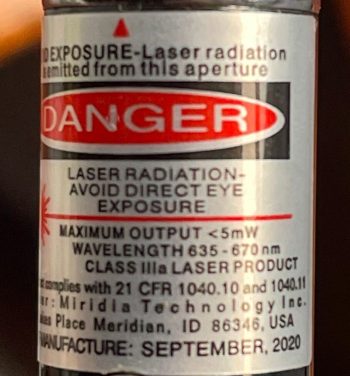
Thus, engineers developped none laser Photobiomodulation devices
This is why new technologies have been developed to provide the same benefits without the risks associated with lasers.
It was from this point that the term Photobiomodulation began to gain traction among professionals, replacing LLLT. In concrete terms, the two terms refer to the same thing and are completely interchangeable.
Actycel® is one of these technologies that allow PBM, or LLLT, to be performed with greater efficiency than previous technologies, while remaining perfectly safe for both the practitioner and the patient.
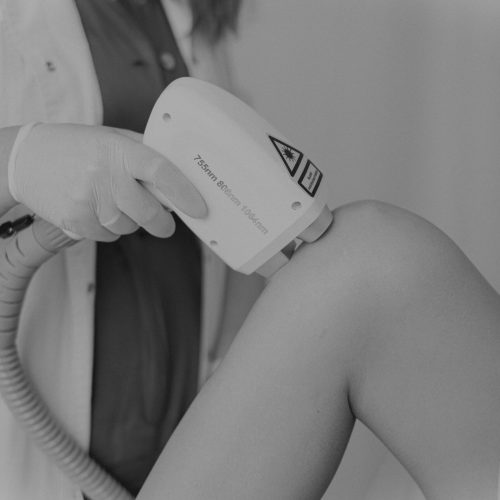
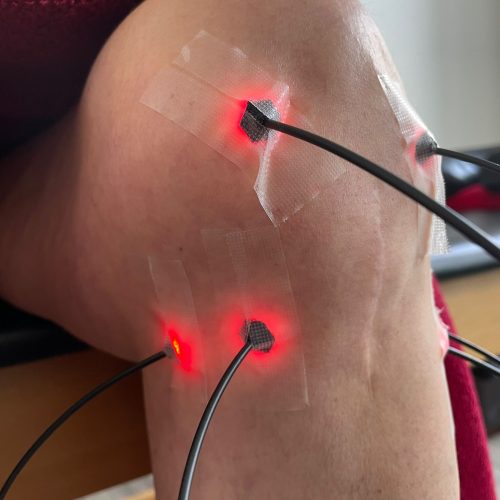
Historical laser technology, efficient in acupuncture, but risky and practioners need regulatory approval to use it
Photobiomodulation device, using ActycelTM technology, designed to be even more efficient, with complete safety
What is Photobiomodulation?
How Does Photobiomodulation Work?
At its core, PBM operates on the principle of photochemistry, where light energy is absorbed by cellular photoreceptors (like Complexe IV in mitochondria). This absorption leads to a cascade of biochemical reactions, including increased ATP production, enhanced cellular metabolism, and reduced oxidative stress. These effects contribute to accelerated tissue repair, reduced inflammation, and alleviation of pain.
(For more detailed information about the cellular and physiological mechanism of PBM, you can subscribe to your next webinar here)
Integration with Acupuncture
Combining PBM with acupuncture creates a synergistic effect, enhancing the therapeutic outcomes of both modalities. Here’s how PBM can complement your acupuncture practice:
- Enhanced Tissue Healing: PBM accelerates the healing process by stimulating cell proliferation and tissue repair . This can be particularly beneficial for treating injuries, chronic pain, and inflammatory conditions commonly addressed in acupuncture.
- Pain Relief: Light therapy has been shown to reduce pain by modulating pain perception pathways and decreasing inflammation. This can enhance the analgesic effects of acupuncture described by a lot of acupuncturist, providing faster and more sustained relief for your patients.
- Non-Invasive and Safe: PBM is a non-invasive, painless therapy with a strong safety profile. It can be used adjunctively with acupuncture needles or as a standalone treatment for patients who may be needle-averse.
- Versatility in Treatment: PBM can be applied to a wide range of conditions, including musculoskeletal issues, skin disorders, inner organs disorders, energetic metabolism disorders, etc. This versatility allows you to expand your treatment repertoire and offer holistic care to your patients.
Scientific Evidences
The efficacy of PBM is supported by extensive research. Studies have demonstrated its benefits in various medical fields, from dermatology to neurology. A meta-analysis published in The Lancet highlighted the effectiveness of PBM in managing chronic pain and inflammation, reinforcing its potential as a valuable adjunct to acupuncture.
Investing in Photobiomodulation Devices
Integrating PBM into your practice is seamless with our cutting edge Photobiomodulation devices. Designed specifically for acupuncturist professionals, our devices offer adjustable frequencies, intensities (power) and energy (joules) to tailor treatments to individual patient needs. With user-friendly interfaces and robust safety features, you can confidently provide this advanced therapy to your patients.
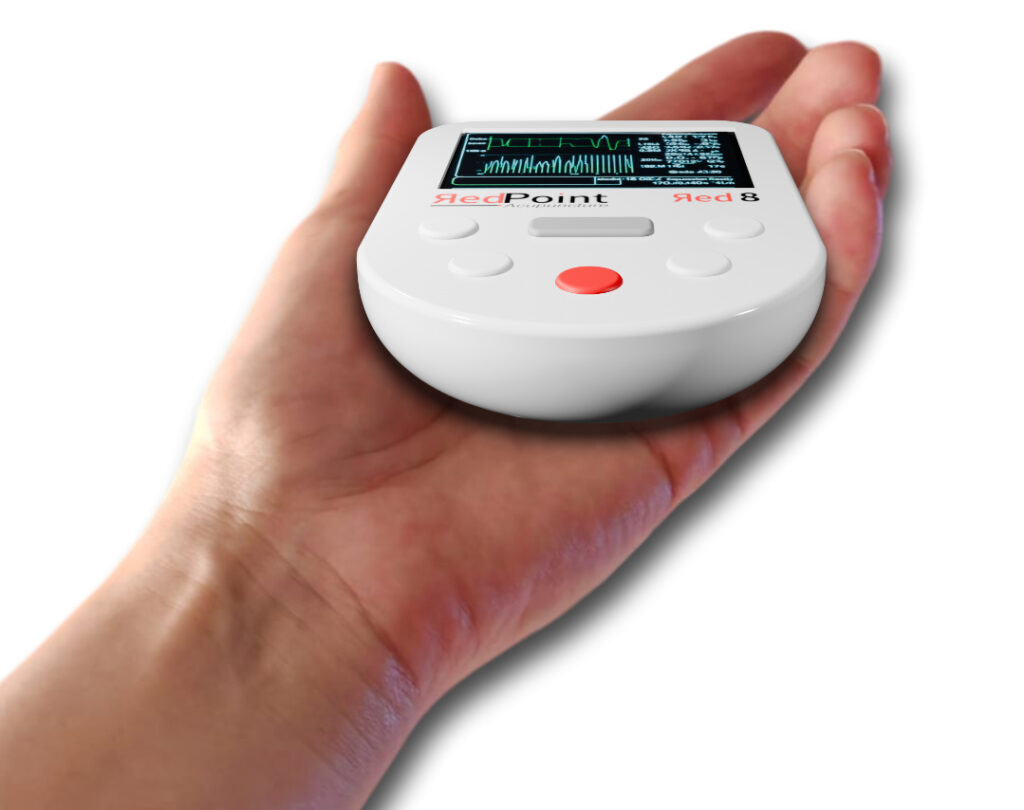
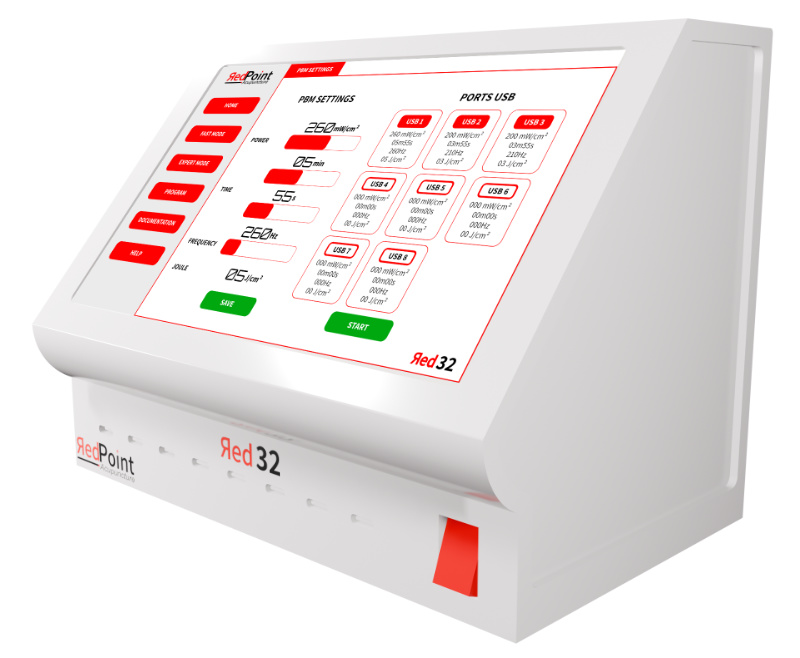
Conclusion
Photobiomodulation (or Low Level Laser Therapy) in our RedPoint Acupuncture devices represents a fusion of ancient healing wisdom and modern science, offering a transformative addition to your acupuncture practice. By integrating PBM, you can enhance treatment outcomes, expand your therapeutic options, and provide a holistic, non-invasive approach to health and wellness. Explore our range of photobiomodulation devices and elevate your practice to new heights.
References:
- Hamblin, M. R., & Demidova, T. N. (2006). Mechanisms of low level light therapy. SPIE Proceedings.
- Chung, H., Dai, T., Sharma, S. K., Huang, Y. Y., Carroll, J. D., & Hamblin, M. R. (2012). The nuts and bolts of low-level laser (light) therapy. Annals of Biomedical Engineering.
- Prindeze et al., I., Arany, P. (2012). Mechanisms of action for light therapy: A review of molecular interactions. Sage Journals.
- Bjordal, J. M., et al. (2008). A systematic review with procedural assessments and meta-analysis of low level laser therapy in lateral elbow tendinopathy (tennis elbow). BMC Musculoskeletal Disorders.
- Hopkins, J. T., et al. (2004). Low-Level Laser Therapy Facilitates Superficial Wound Healing in Humans: A Triple-Blind, Sham-Controlled Study. Journal of Athletic Training.
- The Lancet (2009). Efficacy of low-level laser therapy in the management of neck pain: a systematic review and meta-analysis of randomised placebo or active-treatment controlled trials. The Lancet.
